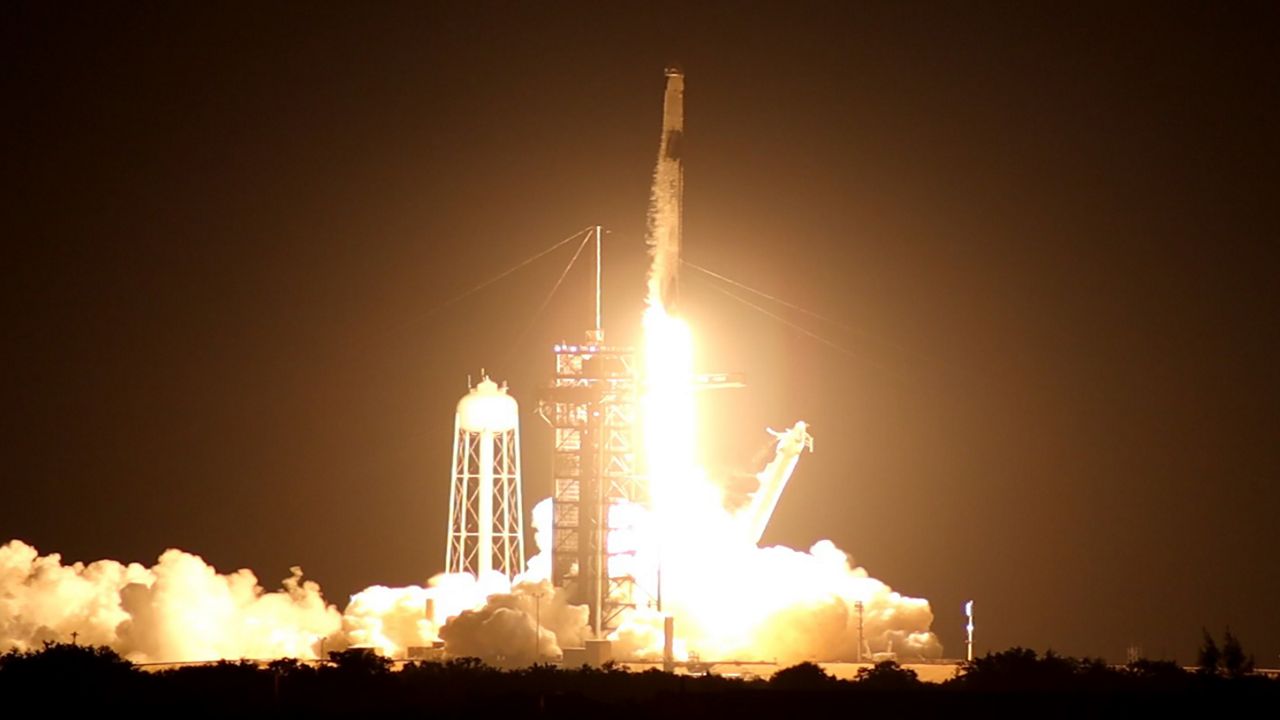CAPE CANAVERAL SPACE FORCE STATION — The weather did not hold out for what would have been a rare double launch in one day for SpaceX on Tuesday.
However, Mother Nature did cooperate enough to get one Falcon 9 rocket launch off, as SpaceX launched the Eutelsat 10B mission from Space Launch Complex 40.
What You Need To Know
- The Eutelsat 10B mission launced, Tuesday , from Space Launch Complex 40
- Originally, SpaceX’s Falcon 9 rocket was going to send up the Eutelsat 10B mission on Monday
- 🔻Scroll down to re-watch the launch🔻
Originally, SpaceX’s Falcon 9 rocket was going to send up the Eutelsat 10B mission on Monday, from Space Launch Complex 40 at Cape Canaveral Space Force Station with a launch window at 9:57 p.m. EST.
However, late Monday night, SpaceX announced on Twitter — two companies that are both owned by Elon Musk — that it was standing down from the launch for additional pre-flight checks.
Standing down from tonight’s launch of the Eutelsat 10B mission to allow for additional pre-flight checkouts; now targeting tomorrow, November 22 at 9:57 p.m. ET for liftoff. Weather is currently 20% favorable
— SpaceX (@SpaceX) November 22, 2022
SpaceX was supposed to launch the Dragon’s 26th Commercial Resupply Services mission on Tuesday afternoon, but poor weather forced the private company to push the launch back to Saturday, Nov. 26.
For Tuesday night’s launch, the rocket’s first-stage booster named B1049 is no stranger to missions. Its first mission was in 2018, when it launched the Telstar 18 Vantage communications satellite. In addition to launching the Iridium NEXT, it has also launched eight Starlink missions.
But it seems SpaceX may be retiring old B1049, as there is no company droneship to land on. Spectrum News 13 has reached out to SpaceX for further information on this and has not yet received a reply.
**Launch Update**#EUTELSAT 10B satellite now planned for #launch on Monday November 21st 21:52 Eastern Time (02:52 UTC, Tuesday November 22nd) from Cape Canaveral, Florida.
— Eutelsat (@Eutelsat_SA) November 19, 2022
The live will be available here: https://t.co/Go0CI4tf0G https://t.co/ISxUGbqodN
About Eutelsat 10B mission
Eutelsat is a telecommunications company based in Paris, France, and provides television, internet and mobile communication services over most of Europe, the Middle East, Africa, Asia and the Americas.
The company is having SpaceX launch the Eutelsat 10B, an all-electric satellite.
"An 'electrical satellite' is a satellite equipped with an electric propulsion system (called plasma propulsion) as opposed to a traditional satellite which has a chemical propulsion system (based on hydrazine and oxydizer)," explained Anita Baltagi, the company's director of communications, in an email to Spectrum News on Wednesday.
"This type of propulsion system allows a more reasonable amount of fuel to be carried (in this case Xenon) and therefore a lighter satellite to be launched for the same payload ...," she added.
She said the solar panels on the satellite produce the electrical energy needed to power it.
It will be located 10 degrees east in the sky and will carry two new multi-beam HTS Ku-band payloads.
“The satellite’s HTS payloads will be able to process more than 50 GHz of bandwidth, offering a throughput of approximately 35 Gbps,” the company stated. “EUTELSAT 10B will also carry two widebeam C- and Ku-band payloads to ensure service continuity for existing customers on the EUTELSAT 10A satellite.”









